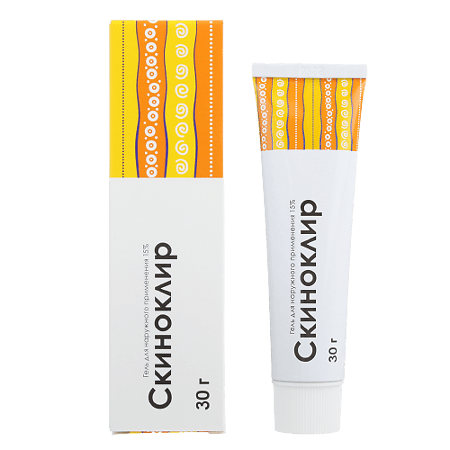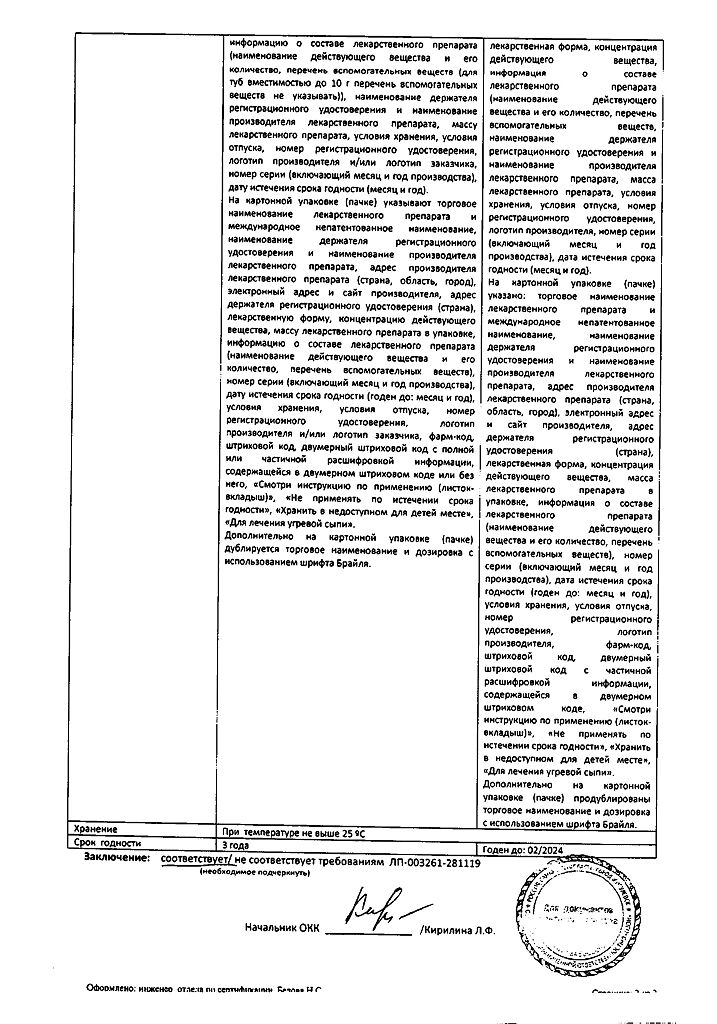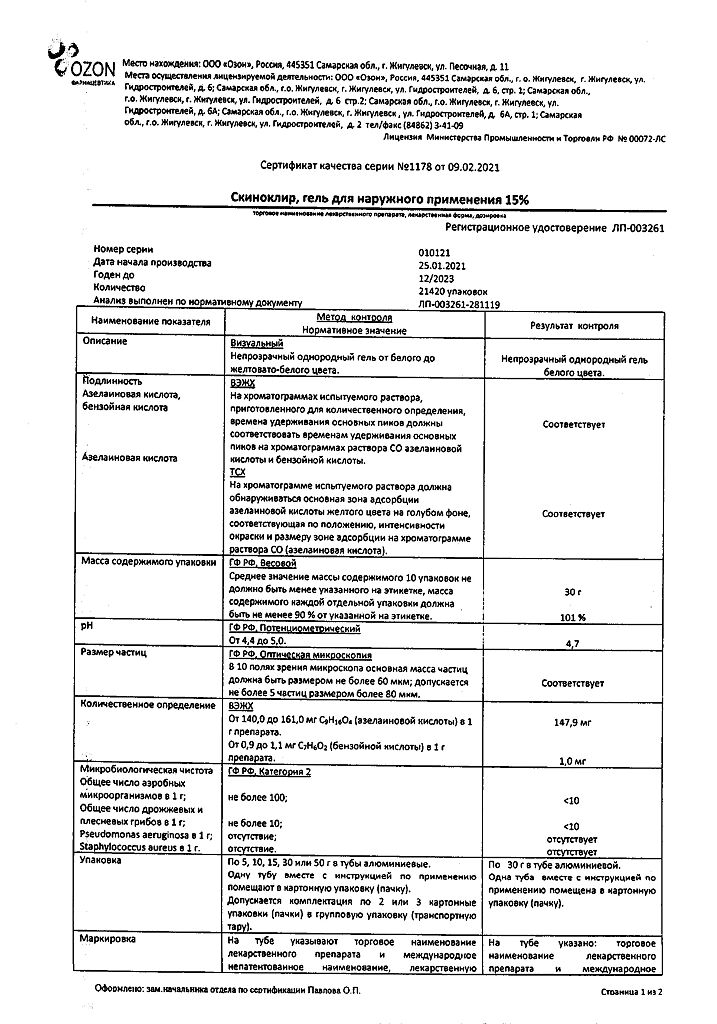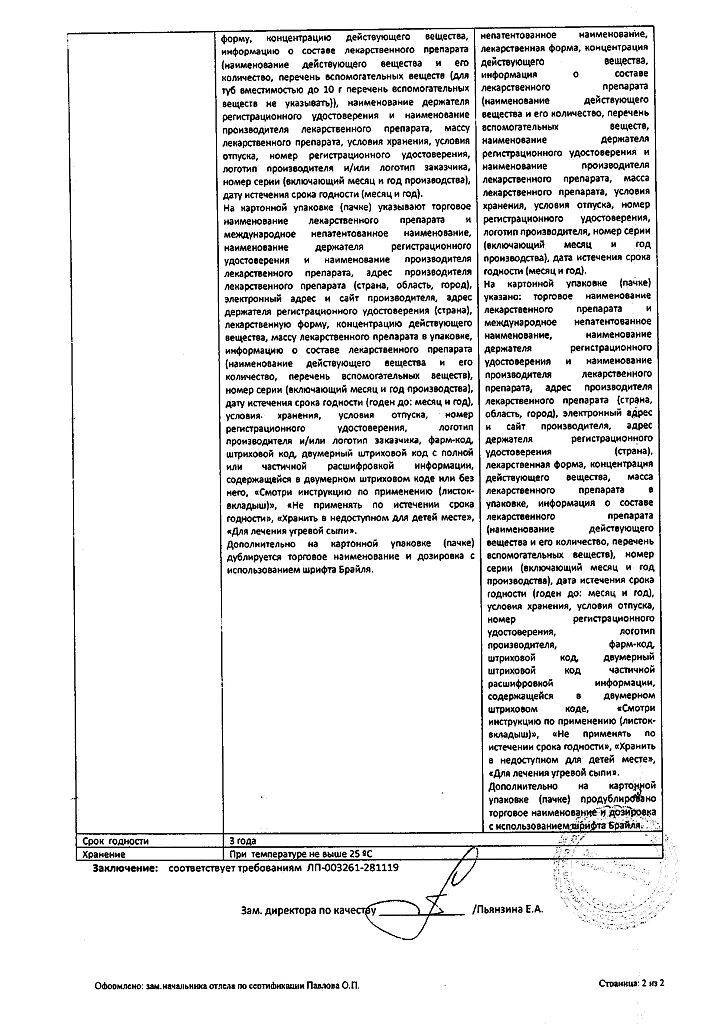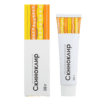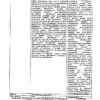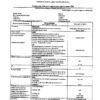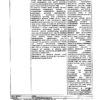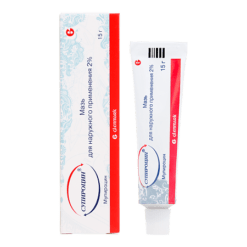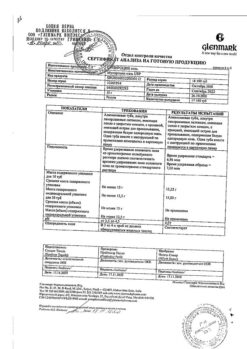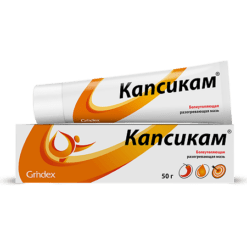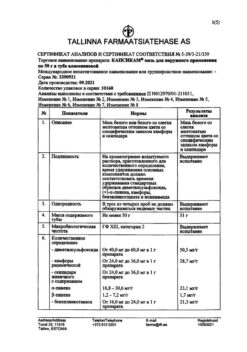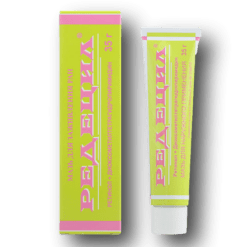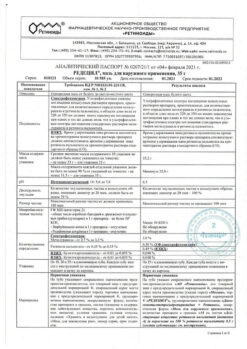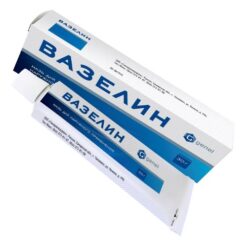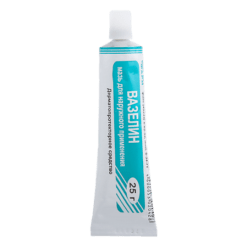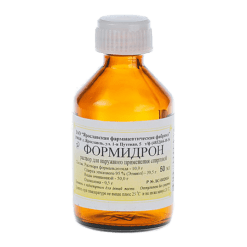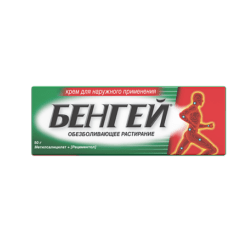No products in the cart.
Skinoclear, 15% gel 30 g
€23.72 €21.32
Description
Causes moderate cytostatic effect (due to inhibition of cell proteins synthesis) manifested in normalization of keratinization processes in the wall of sebaceous follicles; it has antimicrobial action (first of all against Propionibacterium acnes and Staphylococcus epidermidis) both on the skin surface and in sebaceous glands as well as anti-inflammatory action (reducing neutrophil granulocytes metabolism and production of free radical oxygen forms – important factors in maintaining the inflammatory process).
Long-term use of the drug does not form resistance of microorganisms.
Aselaic acid dose-dependently inhibits the growth and viability of abnormal melanocytes. The therapeutic effect in hyperpigmentation (melasma) is due to inhibition of DNA synthesis and/or suppression of cellular respiration of abnormal melanocytes.
Pharmacokinetics:
Assimilation
After application to the skin, azelaic acid penetrates the epidermis and dermis. After 1 g of azelaic acid (which corresponds to 5 g of gel) is applied to the skin, about 36% of the dose is absorbed into the systemic bloodstream.
Excretion
Part of the absorbed azelaic acid is excreted unchanged by the kidneys, and part as dicarboxylic acid (C5 C7) formed from azelaic acid by beta-oxidation.
Indications
Indications
Common acne (acne vulgaris);
Melasma-type hyperpigmentation, such as chloasma.
Pharmacological effect
Pharmacological effect
Causes a moderate cytostatic effect (due to inhibition of the synthesis of cellular proteins) manifested in the normalization of keratinization processes in the wall of the sebaceous gland follicles; has an antimicrobial effect (primarily against Propionibacterium acnes and Staphylococcus epidermidis) both on the surface of the skin and in the sebaceous glands, as well as an anti-inflammatory effect (reducing the metabolism of neutrophil granulocytes and their production of free radical forms of oxygen – important factors in maintaining the inflammatory process).
With long-term use of the drug, microbial resistance does not develop.
Azelaic acid dose-dependently inhibits the growth and viability of abnormal melanocytes. The therapeutic effect for hyperpigmentation (melasma) is due to inhibition of DNA synthesis and/or suppression of cellular respiration of abnormal melanocytes.
Pharmacokinetics:
Suction
After application to the skin, azelaic acid penetrates into the epidermis and dermis. After applying 1 g of azelaic acid to the skin (corresponding to 5 g of gel), about 36% of the dose is absorbed into the systemic circulation.
Removal
Part of the absorbed azelaic acid is excreted by the kidneys unchanged and part in the form of dicarboxylic acids (C5 C7) formed from azelaic acid as a result of beta-oxidation.
Active ingredient
Active ingredient
Azelaic acid
Composition
Composition
For 100 g of gel:
Active substance: azelaic acid – 15.0 g;
Excipients: carbomer 980 – 1.0 g, benzoic acid – 0.1 g, disodium edetate dihydrate – 0.1 g, ceramides LS – 0.1 g, isopropyl myristate – 1.0 g, polysorbate-20 – 1.5 g, propylene glycol – 12.0 g, sodium hydroxide – 0.2 g, water – up to 100.0 g.
Pregnancy
Pregnancy
During pregnancy and breastfeeding, the drug should be used only if the expected benefit to the mother outweighs the possible risk to the fetus and child.
It is necessary to avoid applying the gel to the mammary gland area before feeding.
Contraindications
Contraindications
Hypersensitivity to azelaic acid and other components of the drug;
Children’s age up to 12 years.
Side Effects
Side Effects
Adverse reactions are presented depending on the frequency of development: very often (≥ 1/10); often (≥ 1/100 to <1/10); uncommon (≥ 1/1000 to <1/100) rare (≥ 1/10,000 to <1/1,000) very rare (<1/10,000) unknown (cannot be estimated from available data).
Skin and subcutaneous tissue disorders:
Uncommon: seborrhea acne skin depigmentation;
Very common: itching, burning, erythema at the site of application;
Common: peeling, dry skin, irritation;
Rarely: cheilitis.
General disorders and disorders together with introduction:
Uncommon: paresthesia, dermatitis, discomfort, swelling at the application site;
Rarely: vesicular rashes eczema feeling of warmth rash at the site of application;
Common: pain at the site of application.
Immune system disorders:
Rarely: allergic reaction, worsening of bronchial asthma.
As a rule, local reactions on the skin go away on their own during treatment.
If any of the side effects indicated in the instructions worsen or any other side effects not specified in the instructions are noted, you should immediately inform your doctor.
Interaction
Interaction
The interaction of the drug with other drugs is not known to date.
Overdose
Overdose
Currently, no cases of overdose have been described.
Storage conditions
Storage conditions
At a temperature not exceeding 25 °C.
Keep out of the reach of children.
Shelf life
Shelf life
3 years.
Manufacturer
Manufacturer
Ozon, Russia
Additional information
| Shelf life | 3 years. |
|---|---|
| Conditions of storage | At a temperature not exceeding 25 ° C. Store out of the reach of children. |
| Manufacturer | Ozon, Russia |
| Medication form | gel for external use |
| Brand | Ozon |
Related products
Buy Skinoclear, 15% gel 30 g with delivery to USA, UK, Europe and over 120 other countries.

